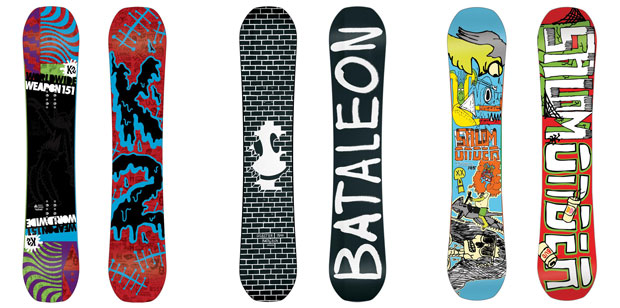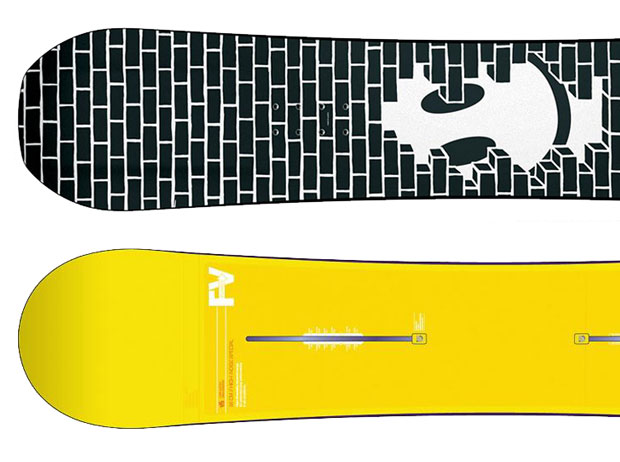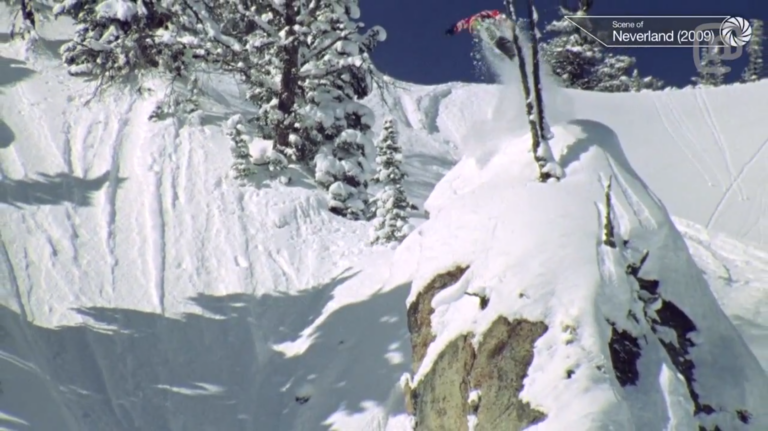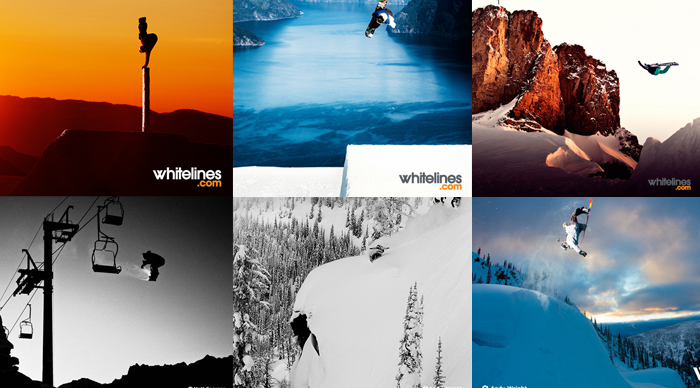Introducing a brand new snowboard gear feature: Tech Thursdays – a look at a specific piece of snowboard technology, from hardware to outerwear fabrics and everything in between. We’re kicking off with a look at the blunted snowboard shape:

Trends in snowboard technologies come and go almost as quickly as fashion trends. One year foam cores or step in bindings are all the rage, the next they’re as passable as that erm, less than successful one-night stand… Yes, many weird and wonderful technologies have graced our sport over the course of its (relatively) short life span; some have been runaway successes while others are better left with the used johnny – in the bin (because you never flush ’em down the toilet right?).
Over the past couple of seasons, while snowboard profiles (you know, that whole camber malarky?) have, to some extent, been dicked around with by every company bar none, snowboard shapes and in particular, nose and tail shapes, have pretty much stayed the same. Not counting all of the funky freeride/powder boards out there, most snowboards these days adopt the traditional curved nose and tail shape. Recently though we’ve definitely clocked an increase in the number of boards with blunted or ‘snub’ noses and tails. Never Summer have been flattening out their nose and tails for a while now but more extreme blunting appeared across more brands last season and is set to continue for 2013. Last year Bataleon actually redesigned the shape of all of the boards in their line, opting to use a blunted shape (to varying degrees) on almost all of them.
More extreme blunting is generally more common on park and rail boards with jib specific decks such as the K2 WWW and Salomon Salomonder all adopting the shape on this years models. But aside from looking a bit different, what benefits do a blunted nose and tail bring from a shredding perspective?

Swing Weight: The most most obvious and quoted benefit is a reduction in swing weight. We could get into a ton of physics geek speak here but to keep it simple lets just say that less nose and tail material equals faster spins around a center of mass (imagine going into the middle of a merry-go-round). This is obviously beneficial for guys that are into freestyle and jibbing.
Effective Edge: Flattening the nose and tail means that a snowboard’s effective edge can be increased in relation to its overall length. This can give a rider the option of downsizing a couple of centimeters without losing much edge hold or stability. Riding a shorter board is especially useful for jibbers looking for loads of slow speed maneuverability for chucking spins onto and off of rails.
Grabs: Bringing the ends of the board nearer to the bindings makes nose and tail grabs easier and gives you a nice, wide, surface to hold on to. Even more reason not be seen busting out any ‘illegal’ tindy, nute, nelon or tailfish grabs then!
Fewer Hook-ups on rails: Less nose and tail equals less hooking on rails. Particularly handy when learning those pesky cab 270’s.
Possible disadvantages: There have been a few reports that the blunted shape is more prone to ‘hooking’ in powder once the nose drops below the surface. And it does kind of make sense if you think about it: shovels are made square for a reason and a curved or pointed edge with a smaller surface area is always going to be better at cutting through snow and rising back to the surface than a wide, flat one.
Has anyone experienced any other advantages or disadvantages that we’ve missed when riding a blunted snowboard? Let us know in the comments section below.








